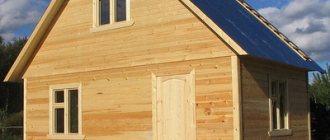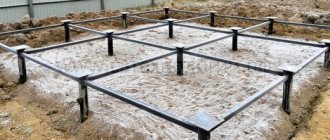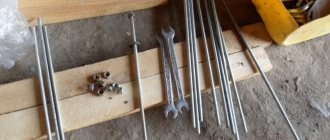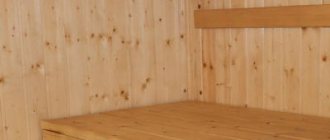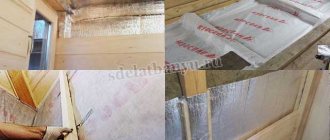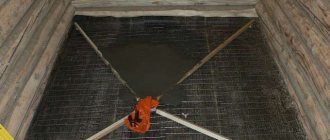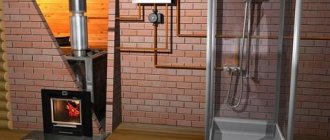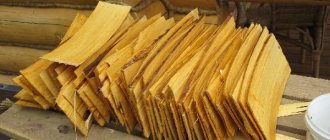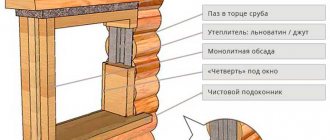Salt contains many beneficial components for the human body.
Pink Himalayan salt is rich in various beneficial minerals.
The largest deposit of such salt is in Pakistan.
Pink Himalayan salt has a positive effect on:
- cardiovascular activity;
- restoration of metabolism;
- restoring sleep and eliminating neurological problems;
- elimination of asthmatic syndrome;
- cleansing the skin;
- strengthening weak immunity;
- regulates the functioning of the digestive system.
The floor made of salt bricks or blocks has antiseptic properties, so you can walk on it with bare feet.
How to make one solid piece from kitchen salt, is this possible?
It’s possible to somehow make one large piece out of kitchen salt, so that you can then cut out a figure for a salt lamp, how to do this.
There are two options for solving the problem of creating “lumpy” salt:
- To make a salt crystal - for this, one salt crystal is placed (at the bottom) in a very, very concentrated salt solution. In one and a half to two months, a large crystalline piece of salt forms around this crystal. You just need to make sure that the growing crystal is always covered with water until the crystallization process is completed.
- The second method is much simpler and the result is faster: pour the required amount of salt into a cloth bag, spray it with a small amount of water, after which the bag is hung in a dry place for several days. As a result, the salt in the bag becomes compacted, and a figure for a salt lamp can be cut out of it.
I have attached a few photos of these figures.
To grow a salt crystal you will need:
1) — salt.
It should be as clean as possible. Sea salt is best suited, since regular table salt contains a lot of debris that is invisible to the eye.
2) — water.
The ideal option would be to use distilled water, or at least boiled water, purifying it as much as possible from impurities by filtering.
3) - glassware in which the crystal will be grown.
The main requirements for it: it must also be perfectly clean; no foreign objects, even minor specks, should be present inside it throughout the entire process, since they can provoke the growth of other crystals to the detriment of the main one.
4) — salt crystal.
It can be “obtained” from a pack of salt or from an empty salt shaker. There will almost certainly be a suitable one at the bottom that could not fit through the hole in the salt shaker. You need to choose a transparent crystal with a shape closer to a parallelepiped.
5) - stick : plastic or wooden ceramic, or a spoon made of the same materials.
One of these items will be needed to mix the solution. It would probably be unnecessary to remind you that after each use, they must be washed and dried.
6) — varnish.
Varnish will be needed to protect the finished crystal, because without protection it will crumble in dry air, and in humid air it will spread into a shapeless mass.
7) - gauze or filter paper.
Useful video
Salt from Artemovsk, Altai salt, overseas Himalayan salt... Many people have heard about salt rooms, or halochambers, today. They are usually installed in sanatoriums, in the offices of reputable companies and even in expensive restaurants. Contractors are not against working with the private sector. But the cost of a halo chamber sometimes turns out to be more expensive than the house itself. In our material we will tell you how to make a salt cave with your own hands - and not go broke.
Before we start construction, let's figure it out: why do we need a halo chamber in the house at all and won't it do more harm than good?
Let's start with the fact that salt in an amount of 0.9% is found both in the blood and in tissue fluids. It has been proven that without this mineral a person can live no more than 10-11 days.
But the main purpose of halochambers is, of course, not to replenish salt reserves in the body, but to treat and prevent the respiratory tract. The salt aerosol, which is essentially the air present there, effectively destroys harmful microflora, and at the same time cleans up the sputum that has formed. Therefore, if you suffer from bronchitis, sinusitis, pharyngitis, or even just caught a common acute respiratory infection, feel free to go for salt treatments.
Among other things, halotherapy polishes burnt skin tissue, thereby promoting its rejuvenation.
Finally, another benefit of salt air is its ability to minimize nicotine addiction. So everyone who wants to quit smoking, read on carefully!
Now about the imaginary harm. There is an opinion that salt is deposited in joints, kidneys and other organs, being the root cause of unpleasant diseases. We declare - these are tales. Calcium urate and calcium oxalate, phosphates and urethrates act as stones and deposits, and the NaCl compound has nothing to do with them.
If we have convinced you of the need to have your own salt room, you can get to work.
Selecting a room
First of all, a mine needs a room. It would be nice, of course, to build a whole building, but you can get by with a separate room.
The following requirements must be met. A basement or semi-basement is ideal for a salt mine. As a last resort, the first floor. The room must be dry, initially devoid of water, electricity and sewerage communications. If they are present, they will have to be dismantled. The floor must be concrete. If there is none, the boards must be disassembled and a full screed made. Salt is a heavy thing; it will crush any other coating. The height of the room is in the range of 2.4-3 m.
Material selection
Before delving into the features of this or that salt, a few words about the technologies for its use. Thus, the walls in the halochamber can be made of salt blocks or simply “plastered” with it. The second method, it would seem, is not so troublesome, but in fact it is short-lived. Such a salt finish will require annual and rather expensive restoration, so we will not consider this option.
Now about the material itself.
The most popular product today is pink Himalayan salt. One brick from it costs about 600-700 rubles on the construction market. In addition, the seller will ask you for another four thousand for each bag of a special adhesive mixture. Do you feel the scope?
The truth is that salt will always remain salt. And the mineral mined in the Himalayas will differ from its analogue from Artemovsk only in price.
It is best to buy salt directly from, “Bassol”, “Iletsksol” or “Tyretsky salt mine” - it doesn’t matter. Contacts of these enterprises are easy to find on the Internet; the problem may only be with the volume of purchases. These giants are used to selling goods by the wagonload, and you will only need 5-10 tons. But here it all depends on your communication skills; you can always reach an agreement. If diplomacy is not your thing, buy salt from resellers; there are plenty of advertisements on the Internet.
To work, you will need fins no more than half a meter wide, but no less than 15-20 cm, and also salt crumbs with a fraction of 1-1.5 mm.
Construction works
It all starts with the preparatory stage: dismantle all the finishing, if there is any, of course. You should end up with a bare concrete floor and similar brick walls. In this case, the windows should be blocked, and the doorway should be expanded upward by 15-20 cm.
If the walls are cold, they must be insulated. Moreover, it is better to do this from the side of the facade.
The next stage is the organization of ventilation ducts. It is advisable to lay them out of brick and place them in the corners of the room. Under no circumstances use metal pipes or corrugations for ventilation; salt will quickly pick up the “keys” to them. The windows in the supply ducts are made at a height of one and a half meters from the floor, but the hood should be located right under the ceiling.
Now about waterproofing. Dry mixtures like CERESIT CR 65 are best suited for work. Clean the walls and floor from dust and moisten them with water. Then dilute the contents of the bag to a creamy mass and, using a spray bottle, apply waterproofing to the surfaces to be treated with a layer of 2 mm. Work can be continued only after it has hardened, that is, no earlier than after 7 days.
After the waterproofing has dried, proceed to arranging the floor. It is laid out from blocks of salt 15 cm high. If you have more massive stones, you can always trim them to the required thickness with a grinder. Just take the circle that is on concrete.
The process itself is somewhat reminiscent of laying paving slabs. The blocks are placed on a “prance” made of moistened salt. Its moisture level is enough to make “snowballs”, but when compressed, water does not come out. All cracks between the blocks are clogged with the same solution.
It is not necessary to wait until such a base dries. Lay out the floor - and take on the walls. The first row is laid out from the largest sections with a fraction of 500×500 mm. The seat is first leveled with moistened salt.
Yes, it’s only in the diagram that all the blocks are smooth and even, but in reality their shape is far from ideal. To give them a working look, you will have to do a fair amount of work with a chisel and grinder.
Before laying the next row, level the seat again with a salt trowel and lay the blocks, but of a smaller fraction. Select minerals in such a way that a slope of 80-60° is formed. The higher the ceiling, the greater the slope.
Starting from the second row, the brick wall with salt must be tied with wooden crutches. This is done in meter increments, and the dressing should be laid at different angles in both horizontal and vertical planes.
Do not forget that all masonry joints are compacted with wet salt. Very soon it will crystallize and connect the entire chamber into one solid monolith.
If during the work it was not possible to close a brick somewhere, it’s okay. The “cave” does not have to be 100% salt. Bare areas can be lined with the same sandstone, it will be very beautiful. We also suggest not to “salt” the ceiling. The spray is short-lived, so it is much easier to line it with wooden clapboard. Just use copper nails in your work; metal ones won’t last long.
And the last nuance. All work should be carried out at a temperature of 26-28 ° C (useful for rapid crystallization of salt). Therefore, you will need a heat gun or a good heater.
In the end it should look something like this.
There is very little left. Install ventilation in the finished shafts, pour a 3-5 centimeter layer of salt on the floor and place comfortable sun loungers around the room. We remind you: during procedures, only supply ventilation should be turned on. A complete replacement of air is done after the session.
As you can see, there is nothing about creating a halo chamber that you could pay a million for. It’s quite possible to carry out all the processes yourself. Most importantly, remember about protective equipment. When working with salt, you must wear gloves, a respirator and safety glasses.
Well, now it's time to test the salt mine. Turn on some nice music and enjoy!
In the modern world, wellness treatments to boost immunity and maintain health are necessary for everyone. But not everyone can find the time and opportunity to attend such events.
In this case, you can use medications, the effect of which appears immediately, or traditional methods are safer and more reliable.
Pink salt has been known since ancient times for its healing properties . With its help, respiratory, skin diseases, and nervous disorders are eliminated. Salt mines and caves were equipped with special rooms with a salt aerosol.
This non-drug treatment is called halotherapy . If you don’t have time to visit a salt cave, then halotherapy at home will be a wonderful option for those who care about their health.
Halotherapy is a type of treatment without the use of drugs. It is based on the creation of an artificial microclimate, which in its properties and conditions will be as close as possible to salt caves.
The effectiveness of the method depends on the duration and systematicity of treatment. To completely eliminate pathology, you need to undergo certain courses of procedures and adhere to all rules and recommendations.
Key points about how halotherapy is useful:
Halotherapy cleanses the organs of the respiratory system, nourishes cells with beneficial ions, restores lung function, respiratory tract microflora, and removes harmful bacteria and dust.
During the session, salt air increases the oxygen saturation of the blood and activates the body's protective function to fight viral infections. Salt caves are especially useful for those who suffer from sinusitis, sinusitis and bronchitis.
This technique is effective for children who often suffer from colds. Helps strengthen the immune system of both children and adults.
Halotherapy combats cosmetic problems . Since salt procedures cleanse the skin, renew it, promote rapid exfoliation of the stratum corneum and nourish it remarkably.
Salt caves qualitatively change the intensity of blood flow to skin cells and enhance oxygen exchange at the micro level. The healing process of wounds and abrasions is significantly accelerated.
Thanks to this ability, halotherapy is recommended for people who suffer from acne, dermatitis of various origins, psoriasis, seborrheic skin lesions and other skin pathologies.
Salt particles improve the condition of hair follicles, giving hair shine and a healthy appearance.
Halotherapy is a great way to help quit smoking . Even in severe cases, when a person cannot give up his bad habit. Inhaling clean air allows you to compare it with tobacco smoke.
This is the first step towards a healthy lifestyle. The lungs are cleansed, inflammation is eliminated and the craving for nicotine gradually subsides.
Many people are interested in how often to do halotherapy. It is recommended for use in the autumn and spring periods, when exacerbation of diseases most often occurs. The number of sessions depends on the nature and severity of the pathology. Usually ranges from 10 to 25 procedures.
Halotherapy: how a salt cave treats
There are indications and contraindications for halotherapy. There are quite a lot of indications for its use. The main goal is to improve the health of the respiratory system, cardiovascular and nervous system.
Main indications:
The process of growing a crystal.
The container with the prepared water is placed in warm water (approximately 50-60 degrees), salt is gradually poured into it, with constant stirring. When the salt can no longer dissolve, the solution is poured into another clean container so that no sediment from the first container gets into it. To ensure better purity, you can pour through a funnel with a filter.
Now, the previously “mined” crystal on a string is dipped into this solution so that it does not touch the bottom and walls of the vessel.
Place the container in a dark, cool place and be patient - the visible process will begin in a couple of days, but growing a large crystal will take several weeks.
As the crystal grows, the liquid will naturally decrease, and therefore, approximately once every ten days, it will be necessary to add a fresh solution prepared in accordance with the above conditions.
During all additional operations, frequent movements, strong mechanical stress, and significant temperature fluctuations should not be allowed.
When the crystal reaches the desired size, it is removed from the solution. This must be done very carefully, because at this stage it is still very fragile. The removed crystal is dried from water using napkins. To add strength, the dried crystal is coated with colorless varnish, which can be used for both household and manicure purposes.
And finally, a fly in the ointment.
A crystal grown in this way cannot be used to make a full-fledged salt lamp, since it uses a special natural mineral - halite, which contains many natural minerals.
But from what you got, it’s quite possible to make some kind of craft, for example, a miniature model of the same salt lamp, by inserting a small LED into the crystal, powering it from a battery.
Floor installation
The next thing to do is arrange the floor. For this purpose, it is necessary to select salt lumps no more than 15 centimeters wide. If during procurement it is not possible to load a multi-fraction composition, then preference should be given to larger components. Subsequently, large pieces can be separated using a turbine and chisel. To cut salt, you must use concrete discs.
The process of laying salt blocks on the floor is similar to installing paving slabs. A layer of moistened salt is laid on the floor. It should form into a lump when compressed, but not release water. Salt blanks are sequentially laid out on the litter and compacted using a rubber hammer. For this purpose, it is better to purchase the latter with white rubber, since it does not leave marks. The resulting cavities are also filled with a salt composition.
How salt blocks are made for lining salt caves
As reported in the previous article, several decorative options are used for interior design of salt caves:
- Salt spray method (when the walls visually resemble the walls of a cave)
- White salt blocks (bricks)
- Himalayan salt tiles
- Himalayan salt pebbles
Blocks (bricks) made of Himalayan salt have an interesting, recognizable color, the price for 1 piece is about 150-200 rubles. The material is imported into Russia. The largest deposits are located in Pakistan, India, and Bhutan.
White salt bricks for lining salt caves are made by Russian and Belarusian manufacturers; they are based on Sol-Iletsk salt and salt from other mines. Their cost on the market is actually similar - 200-300 rubles/1 piece.
Who can use salt lamps?
If your home is inhabited by people prone to allergic, respiratory, and skin diseases, salt lamps will effectively serve as a “house doctor.” For what diagnoses is it worth purchasing a night light made from Himalayan salt?
- Chronic and seasonal diseases of the upper respiratory tract.
- Reduced and weakened immunity.
- Vegetative-vascular dystonia, hypertension, nervous disorders.
- Dermatitis, allergic skin problems.
Gatotherapy is especially useful for chronic smokers or people who work in dusty rooms or in chemically hazardous enterprises. They constitute a risk group and are susceptible to the occurrence of pulmonary and bronchial pathologies. Salt lamps are needed not only when there is a patient in the house. First of all, this is a beautiful night light, designed to provide diffused lighting at night. A pleasant glow has a calming and relaxing effect on the subconscious, helping to get rid of anxiety, stress, and the consequences of a busy life in a metropolis.
The duration of a session in a halochamber is about an hour, the minimum number of sessions is ten. It is advisable to repeat the course of treatment in spring and autumn. Salt lamps can be used much longer and more often, at any convenient time. They have no contraindications (except for rare cases of individual intolerance). They will become an effective preventative measure, reducing the number of medications used and diseases in general. On the pages of the site the site provides a varied assortment of salt lamps. A wide range of lighting fixtures will help you equip your home with a unique, individually selected “halo chamber”. It will stand out with its stylish design, optimal size and ease of maintenance. For large rooms, models weighing from 20 to 100 kg are available. For small rooms - small figured products or natural formations: Rock, Drop, Ball.
Sawing method
It is used to make bricks from Himalayan salt in countries such as Pakistan, India, and Bhutan. This is a labor-intensive process, using a large number of workers. The mined salt blocks are cut, polished and packaged.
A similar method is used to produce lamp blanks from Himalayan salt.
The principle of making lamps from Himalayan salt is similar to the method of making blocks:
As stated earlier, research does not support the benefits of Himalayan salt blocks in preventing respiratory diseases. Therefore, we can only talk about the decorative functions of “Himalayan” bricks.
Using aromatic salt lamps
An aromatic salt lamp made from Himalayan salt with a candle inside not only provides constant heating of Himalayan salt for the purpose of ionization and antiseptic air treatment, but also creates a source of soft light throughout the entire room of a house or modern apartment.
We invite you to familiarize yourself with: Do-it-yourself shower bucket for a bath
Such designer lamps (salt ionizers) made from Himalayan salt are not only environmentally friendly and safe, but also, importantly, very economical. After all, to use them it is not necessary to use electricity that has become familiar.
The level of light transmission of Himalayan salt allows the use of lamps made from it as lighting devices even in rooms with a large area.
So, in conclusion, we can conclude that the use of such a modern element of apartment decor as Himalayan pink salt can not only help cope with the onset of depression, but also make the body stronger, increasing its immunity, and will also help with such common diseases as allergies, flu and colds.
Himalayan pink salt is used both in decorating modern apartments and in the construction of partitions and walls, in the manufacture of stairs and in floor paving.
It is used for salt lamps and lamps to improve the health of the air in the apartment and house. Undoubtedly, once you get acquainted with this unique material, you will fall in love with it forever!
Pressing
In Russia, the first patent for a method of creating artificial blocks of salt for the internal lining of premises intended for the prevention of bronchopulmonary diseases was issued in 1984. Its authors were S.D. Shipilevsky, Yu.G. Maksimov, A.N. Egorov and G.N. Solomkin (production association “Chuvashstroymaterialy”).
According to him, the blocks were pressed from rock table salt with a moisture content of 5-7%, and then kept at room temperature for a week. This made mass production possible with less labor and the risk of getting defective products.
Production stages
- The harvested crushed raw materials are poured into a wooden box.
- The quality of rock table salt is checked (humidity, grinding)
- Then the mass is loaded into the mixer for 30 minutes, water is added until the material moisture content reaches 5-7%.
- After mixing, the salt mass is unloaded into the compartment, where it sits for 8-10 hours.
- The molding sand, according to the weight of the block, is placed in a steel mold of a hydraulic press and exposed to the machine.
- The molded artificial block is placed in a room at room temperature for 7 days to harden. To prevent the blocks from sticking together, they are separated from each other with plastic film.
This method involves gluing the blocks during laying due to salt crystallization and does not involve the use of binding solutions.
Commissioning
At the last stage, it is necessary to install intake and exhaust ventilation in the ventilation openings of the walls to artificially ventilate the room in order to maintain the necessary microclimate. A layer of salt ranging from three to five centimeters thick is poured onto the floor and sun loungers are installed to suit your taste.
During finishing work, it is necessary to ensure that the room temperature remains between 26 and 28 degrees. These are the optimal conditions under which salt crystallizes. If this temperature regime is not established naturally, it is worth using a heater or other heating device.
Tags: tiles, hand, yours, salt
« Previous entry
Equipment for the production of salt blocks
The main equipment for making bricks for finishing salt caves using the pressing method is a press. It can be of various brands; the P-125 press is suitable for such purposes. The scope of application of the device is the construction industry (concrete, natural materials, artificial stones, powder metals). Its technical characteristics allow a maximum reinforcement of 125 tons. The hydraulic press has centralized control.
In addition to P-125, you can use other brands of equipment with similar characteristics.
Salt block press.
It's good when the equipment has sufficient performance. So, if a press allows you to produce up to 500 blocks per shift, is automated and safe, then the payback period for a set of equipment in some cases can be up to 1 year.
Salt room lighting
One of the prerequisites for the original salt design is lighting. For illumination, ordinary LED strips are used, which are placed, for example, behind transparent salt crystals or inside salt blocks. In combination with multi-colored or even black salt, you can create a unique room design. The salt finish goes well with a variety of lighting scenarios. The special unique mode of smooth flickering looks impressive, when salt crystals in the decoration immerse the space in a magical glow.
Salt wall: benefits
The therapeutic effect of a salt wall is achieved provided that there is 2 square meters in the room (approximately 30 square meters). meters of salt surface. For those who decide to decorate the room with natural salt for the purpose of aesthetic satisfaction, it is enough to use salt stones in the quantity in which it is intended. A large number of salt crystals does not negatively affect the body, and therefore only room humidity can limit its use.
In the regions of Russia it is possible to buy salt bricks for finishing from the Himalayan or Black Sea salt. Therapists recommend using the latter option for the reason that it contains more sodium with chlorine and other useful elements.
Ventilation
A ventilation system must be in place in the salt room. For this purpose, special channels are laid out of brick in the corners of the room. In this case, under no circumstances should you use various pipes made of metal. Salt reacts with them very quickly, which will only create unnecessary problems.
Ventilation windows must be installed at a distance of one and a half meters from the floor level, and exhaust openings in the wall should be located as close to the ceiling as possible. This condition is important for maintaining the microclimate. You cannot create a room without forced ventilation.
DIY salt wall in an apartment: application options
Options for applying salt to walls depend on the following features:
- The area intended for the application of crystals.
- Room temperature.
- Possibility to install the necessary equipment.
- Wall bases - concrete or brick wall - are the best option.
There are several options for forming a salt wall in a room:
- Soaking the burlap.
- Spray
- Planting blocks with glue.
- Decoration with large crystals.
How to apply salt to walls: instructions and application technology
The technology for applying salt crystals differs in the duration of the work, the service life and the methods used to create the desired salt wall.
Glueless salt wall: installation technology
The use of the glueless method is the formation of a salt wall without the use of special glue.
There can be two methods for glueless design: The first option involves soaking clean burlap in a thick salt solution. In order for the crystals to settle and grow on the fabric, it is necessary to dissolve 1 kilogram of mountain salt in 350 grams. In order for the salt to completely dissolve, you will need to heat the water and only then dissolve the salt in it.
To form the material for wall decoration in the future, it is worth pouring water into a vat made of plastic or ceramics (metal is not used). Place the burlap in such a way that you get either a flat surface or an uneven base for decoration. When the salt builds up and hardens, you can begin to decorate the wall. Attaching burlap to a wall or shelf is possible using self-tapping screws or nails. The carelessly extended salt streaks look original.
Spraying is a more labor-intensive and technically complex process. To build up a salt layer on the surface of the wall, you should first level it with plaster without finishing it. After applying the primer (preferably acrylic), spray on a thick salt solution. The only problem is that each layer of 0.2-0.3 mm must crystallize without the use of hair dryers and other devices. Only after each layer has completely dried in a dry room can the next layer be applied until the required thickness is formed.
How to apply salt to the walls for a salt room with glue
A more practical forming option is gluing salt plates to the base of the wall. This method is not suitable only for plasterboard walls and uneven surfaces. In order to create a favorable climate in your room you will need:
- Align the wall with an error of up to 0.3 mm. If there are more irregularities, they will need to be leveled.
- The tiles are fixed to an ideal, flat and always dry surface using special construction adhesive without water. The glue is applied around the perimeter of the tile: in the center and crosswise.
- Laying with vertical bandaging of seams.
- The width of the seam is at the discretion of the designer; it is permissible to use both installation close to each other and across a gap.
- If necessary, you can seal the seams with salt: add water to the dry mixture until the grout consistency is formed.
When creating a frame base for the blocks, a metal profile system is formed from strong rods to fix the salt slabs. Installation in this way is carried out only by specialists with professional equipment.
If you plan to create a salt panel with internal lighting, then grouting the seam is mandatory for the reason that the light emanating from the cracks will unpleasantly “hurt the eye.”
Other mounting options
Other options for installing salt are used for decorative design of space.
Quite popular is the method of decoratively forming a salt mound near the floor in the form of a fireplace from rough, unhewn stones of coarse salt. Gluing is done with liquid stone nails one on top of the other. There is also the option of designing a mini fireplace with internal lighting made from pieces of salt. It is noteworthy that salt panels have several shades: from natural gray to pleasant yellow and beige.
Waterproofing
How to build a salt room? When waterproofing walls, special building mixtures that have these characteristics are used. In stores that specialize in selling this group of products, consultants can easily help you find the appropriate composition. In modern construction, such products are in demand, so finding the right mixture is not difficult.
To apply the insulating composition to the wall, it must be diluted with water to form a thick paint. Then, using a wide brush, apply successively to the wall. It is better to start from the top, gradually lowering to the floor. Thus, the thickness of the insulating layer applied in this way should be about two millimeters.
How long does a salt wall last?
Features of the service life of a salt wall depend on the quality of the work performed, as well as on the method used and the humidity in the room.
The main enemy of a salt wall is moisture. If there is condensation in the room, the salt wall moves away and peels off from the base. The material itself is fire-resistant, and therefore it can be used even in a bathhouse if it will be used infrequently, and after each procedure the room is ventilated and dried. The only problem can be that the glue on which the salt block is placed cannot withstand a load of more than 65 degrees.
A wall made of useful material serves depending on the type of application of crystals:
- When applying dust or spray, renewal will be required every 3 years.
- With block installation, restoration is necessary every 5-6 years.
For example, professional wall cladding in the form of a block of the mineral halite is unlimited in use. But not even every wealthy person can afford the use of such material. When certain factors are created, you can observe how the salt layer grows on the blocks.
How to Use Salt Elements Effectively
The peculiarity of Himalayan salt is its high density (2.3 g/cm3, which is comparable to the density of natural marble). Due to its physical characteristics, the material is suitable for interior decoration. Salt bricks are understandably afraid of moisture, so they cannot be used for outdoor work.
In interior design, two main differences in the material are most often used: the halotherapeutic effect and the ability to transmit light. Using tiles you can create matte walls and entire salt rooms. In this case, there is no need to install a halogenerator, and the air is constantly saturated with microparticles from the entire surface of the room. An important requirement for preserving the interior is effective exhaust hood. It prevents air stagnation, eliminates high humidity and mineral destruction.
Features of care
It is noteworthy that different combinations and powers of sodium chloride sources (slabs or salt spraying) provide equally different dosages of negatively charged air ions. According to this theory, there are different durations of stay in a room with a salt wall:
- If the concentration of negative chlorine ions is 5 thousand/1 cm3, then the effect is identical to a walk in a pine forest or near the seashore during a small storm.
- If the concentration is 8 thousand/1 cm3, the effect is identical to a walk in the mountains.
- At 30-35 thousand/1 cm3 the effect is equal to the therapeutic effect, which is controlled by a doctor. But, with a strong desire, it is impossible to recreate such a climate at home.
In order for a room with a salt wall not only to please the eye, but also to serve for a long period of time, it is recommended to monitor the humidity in the room, not drink hot drinks or alcohol in the room, and also limit the number of visitors to 3 people per room of approximately 30 square meters. meters.
A visit to the salt room stabilizes blood pressure, helps relieve stress, increase stress resistance, overcome insomnia and spring fatigue syndrome, and strengthen the immune system. But, in order for the salt wall to serve for a long time, it is necessary to follow the rules of work at all stages, as well as monitor the humidity in the room. For connoisseurs of natural space design, such a salt wall will be a universal way to express themselves.
Halogenerators and decor
According to the healthcare standard, halogenerators AGG 03 or AGG 01 with “Fluidized Bed” technology are used to pump ionized air. This unit maintains the sodium chloride aerosol level in the halochamber at 5 milligrams per cubic meter.
There are other aerosol compositions with the following minerals:
- iodine;
- magnesium;
- selenium;
- zinc.
Panels, salt lamps, and bas-reliefs are used to decorate the room. Fossil shells, trilobites, imitation stalactites and stalagmites are installed.
Salt materials - what are they?
Interesting from the point of view of its impact on human health, this material can be used not only for decorative finishing of various premises, but also for the full construction of structures. The cost of products of this type is quite high.
To completely make a “salt” room in a bathhouse or house will cost a decent amount. But you can simply decorate the wall, complete individual elements, and this will be enough for a good healing effect.
Salt brick consists of 60% sodium chloride, 35% potassium, the remaining 15% are other chemical elements, which together have a significant healing effect.
By using products made from salt minerals in your home, you can get an atmosphere that will be in many ways similar to the climate of the sea coast.
Advantages and disadvantages of using salt materials
Why are salt bricks and other salt materials so useful:
- The excellent antiseptic properties of salt ensure sterility in rooms, as it has a bactericidal effect.
- Significant impact on human health - salt has a good effect on the condition of the skin, increasing its elasticity and appearance.
- When heated, ions are released into the air, which have healing properties for allergies and pulmonary diseases, and remove harmful toxins from the body. In addition, they have a positive effect on the heart, as well as the musculoskeletal system.
- Aesthetically attractive products will help create a unique indoor interior.
- The environmental purity of the material is ensured by its natural composition.
- Resistance to high temperatures allows the use of these materials in baths, saunas, and bathrooms.
- The strength of high-quality products is high enough to be used as a structural material.
- These parts are easy to install yourself. And the instructions from the material manufacturer will help with this.
- If used properly, salt products will last you a very long time.
But with a large number of advantages, these products have a significant disadvantage. Salt is very sensitive to moisture. A short-term increase of more than 50% will not lead to a change in the positive characteristics of the material. It is advisable to maintain the necessary microclimate in the room using ventilation or air conditioning.
Types of salt products
Currently, a wide variety of salt finishing materials are offered on the construction market.
Depending on the size and type of processing, several types of these products can be distinguished:
- Salt bricks - the dimensions of the elements are mainly 200 x 100 x 50 mm. With this size, they are a very durable and reliable building material, which is perfect for building walls and paving floors. The weight of one element is about 2.4 kg. There are polished elements and products that have a natural texture on one side. The second option is not suitable for flooring, but they can create a very impressive appearance of the finished surface.
- Salt blocks - produced in sizes 200 x 200 x 50 mm. With such dimensions, the installation of walls and floors requires fewer seams, and construction time is significantly reduced. The weight of one block is approximately 5 kg. There are also products with dimensions of 400 x 200 x 50 mm.
- Tiles - usually made in sizes 200 x 100 x 25 mm. Due to their low weight, which is of great importance when finishing large areas, salt tiles are in quite high demand. The price for these products is lower than for bricks and blocks.
- Salt pebbles are produced in fractions from 20 mm to 60 mm.
- Salt panels are made by spraying a layer of salt onto a plastic or wooden base. They are used mainly for purely decorative purposes. The cost of plastic products is much lower than that of wood. But these options are also incomparable qualitatively. Moreover, most often the wood base is made from tree species known for their healing properties.
- Salt crystals are flat in appearance with one or two finished sides. Use in decoration gives an excellent look to the interior.
- Accessories made of salt - various lamps, candlesticks, paintings made of colored salt crystals
Important! Often, instead of products made from a solid mass of salt mineral, the market offers pressed elements made from similar materials. Their healing properties are very doubtful.
Bricks and other items made from pink Himalayan salt are in great demand in the market. The pink color of the products is given by iron, which is part of this mineral.
In addition to it, salt contains more than 80 microelements, many of which have a significant effect on the human body. They are able to make the microclimate in the room almost indistinguishable from the air on the sea coast.
Himalayan salt - origin and benefits
Himalayan salt is so named because of its origin, as its homeland is the highest mountains in the world - the Himalayas. The pink color of Himalayan salt was given by the magma with which the salt was mixed over thousands and even millions of years of its origin. You can find many trace elements in it (namely from 82 to 92), and this salt is not only the healthiest, but also the purest of all others.
We invite you to read: Do-it-yourself sauna stoves? Is it possible?
This unusual product is used in construction and modern apartment design not only as a decorative material, but also to ensure a healthy indoor microclimate, namely for the purpose of ionizing and disinfecting the air and reducing its radioactive background.
Himalayan salt has antiseptic properties. The air in a room decorated with building materials made from Himalayan salt is no different in composition from the sea. Just imagine - you live in your apartment all the time, as if in a fashionable resort! Well, isn't this wonderful?
The best effect can be achieved by covering as large areas of the interior as possible with Himalayan salt. It is also desirable that some salt elements be heated, so that salt ions will be released more intensely.
This is especially important to do in those rooms where it is not possible to completely decorate the room with Himalayan salt, and only some items made from this amazing material are used - for example, individual tiles, lamps or lamps.
Himalayan salt tiles are made by pressing into hard, durable layers. Such layers are very reliable and resistant to temperature changes. That is, heating smooth tiles of Himalayan salt not only does not harm them, but, on the contrary, increases their healing properties. Such tiles can be used to decorate walls, steps of stairs, fireplaces, bedrooms, as a material for finishing baths and saunas, etc.
If financial capabilities allow, then you can lay out an entire wall of the house from such slabs or blocks (preferably on the sunny side), which will have a positive effect on the microclimate of the entire structure. As a rule, the entire wall is not laid out with salt, but salt blocks are interspersed with ordinary building blocks.
So, it looks very beautiful from the outside - the sun's rays create a play of light and shadows, enlivening the dull, familiar appearance of the building, and giving it unusualness and mystery. It is worth noting here that Himalayan salt and slabs made from it are a very strong and durable material. These Himalayan salt tiles will serve you for a very long time, without losing any of their beneficial properties over the years.
When installing slabs of Himalayan salt as partitions in an apartment or covering floors with them, many modern designers advise using LED lighting. This will not significantly increase the cost of repairs, but will have an effective impact on the final result.
In addition, the play of light for many designers is not just a joke, but serious, painstaking work. But it's worth it - see for yourself by looking at the photo below.
Application area
Salt rooms are not just a beautiful home decoration. Their healing properties are widely used in:
But in residential premises such products can also:
- Decorate any room in the house.
- Cover the fireplace.
- Interior decoration of premises with decoratively beautiful materials is becoming increasingly widespread.
From this material you can not only build walls indoors. Their beneficial properties will be well expressed even when constructing simple fences around heat sources: stove, fireplace, heater.
Advice: it is better to place salt bricks closer to heating devices. Greater efficiency can be achieved by placing a fan nearby or placing a salt element near the air conditioner.
False walls made of salt bricks look impressive in the interior, especially if they are equipped with lighting. Product thickness up to 70 mm allows you to make high-quality translucent material that looks very interesting when finished. If the budget allows, then you can lay out not only the walls, but also the floor with such materials.
An interesting solution could be to install lighting behind the salt lining. Typically, LED strip is used for this. This design move can create a special atmosphere in the room. In addition, such lighting can be used as night lighting.
Salt finishing technology
Have you decided to do this finishing yourself?
Not so simple! It is important to understand that salt bricks are not an ordinary building material. For this reason, the installation of these products must be approached with knowledge of the characteristics of the masonry. It is best to invite professionals for this.
Typically, rooms are finished with solid elements made of salt. This requires a solid foundation, so the total weight of the parts can be significant. The service life of this finish is about 30 years.
But it is also possible to spray it onto existing surfaces - “salt plaster”. This way, spectacular decorative elements are created:
- Grottoes;
- Caves;
- Various forms of stalactites.
The downside in this case is the short service life of the finish. In three years it will need to be updated. This problem is solved by combining two methods. Partial finishing of walls or floors is combined with decorative spraying of salt crumbs. This method is used most often.
Salt bricks have unique properties and have beneficial effects on the human body. It is financially difficult to cover an entire room with these materials. But even one small item in the house can make the atmosphere healing.
The main thing is to place them near heating devices. More complete information about these products can be obtained by watching the video in this article.
Contraindications
Like any treatment method, halotherapy has a number of contraindications for use:
In the absence of the above conditions, the technique can be used from childhood.
Many who have visited a salt cave at least once in their lives were surprised by the miraculous properties of their microclimate.
But due to the lack of opportunity to do this regularly, people are wondering whether halotherapy is possible at home. After all, prevention or treatment with air in salt caves is required more often than once a year.
You can create a salt room with your own hands . If this is done correctly, then it is quite possible to almost thoroughly reproduce the microclimate characteristic of salt caves. The effect of their use is in no way inferior to treatment in natural caves.
Equipping a salt room yourself is an expensive and complex procedure that consists of the following stages:
Basic principles for choosing a halo chamber
When deciding to build a salt room at home, you need to consider the following points:
- When constructing a halochamber, it is important to adhere to the methodology. It is allowed to build it only from pure rock salt without foreign impurities.
- The salt room can be combined with a full-fledged relaxation complex through chromotherapy systems.
- When choosing the design of a salt cave, it is possible to proceed from the requirements of compliance with a non-specialized stylistic solution for the home SPA area. When determining the design and configuration, it is important to take into account children visiting the salt room.
According to the methodology approved by the Ministry of Health, a halochamber is a separate room equipped with three main components that create a healing climate:
For that. To use halotherapy at home, specialists have created complete sets of salt caves and rooms.
Their diversity makes it possible to place them both in small rooms, creating basic therapeutic functionality, and in fashionable interiors.
Pregnancy is a crucial period in the life of every woman. Even if bearing a child occurs without complications, you should be attentive to your well-being and make responsible decisions about the use of any health procedures.
Halotherapy is a simple and natural physiological procedure that does not have an aggressive effect on the body. The healing effect is complemented by a feeling of calm and relaxation.
Therefore, in the absence of general contraindications, increased suspiciousness and acute toxicosis, visiting a salt room during pregnancy has a beneficial effect on a woman’s well-being.
But it is important to understand that all procedures should be used only after agreement with the doctor who is monitoring the pregnant woman. In addition, he must monitor the body's response to halotherapy. If any deviations occur, the course must be stopped immediately .
The use of halotherapy, even at home, significantly improves a person’s well-being, eliminates many pathologies, strengthens the immune system, and reduces the frequency of viral and colds.
Already after the first procedure, salt rooms give a tangible effect, a surge of energy and strength.
Many people who encountered a salt cave for the first time in their lives and were truly impressed by the properties of their microclimate dream of having their own cave.
Equipping a salt cave is not a cheap pleasure, which is why many people think about making a salt cave with their own hands.
Choosing a room.
A basement or first floor is suitable for a salt cave.
The room must be dry and initially devoid of water, electricity, and sewer communications. If they exist, they will have to be dismantled.
The floor in the room is concrete.
The height of the room ranges from 3 meters.
It all starts with the preparatory stage: dismantle all the finishing, if any. It should look like a bare floor and the same walls. At the same time, block the windows and expand the doorway upward by 15-20 cm. If the walls are cold, they must be thermally insulated. Moreover, this must be done from the side of the facade.
The next stage is the organization of ventilation. Under no circumstances should metal pipes or corrugations be used for ventilation. Exhaust ventilation should be located under the ceiling.
You also need the material itself - salt, it is better to buy salt from the manufacturer - this is Artemsol, Iletsksol, Bassol, Tyretsky salt mine - it doesn’t matter.
There are several ways to implement your plan.
The first method: covering the walls with salt blocks or tiles. They come in different thicknesses and colors.
Salt blocks or tiles are simply glued to the wall.
The advantage of this method is speed: a salt cave can be created in 2-3 days, the disadvantage is the need to use glue and the loss of some free space due to the thickness of the tiles.
The second method: applying salt to the walls - using the method of making a salt coat.
The room must be dry, otherwise there will be no adhesion of salt crystals to the wall surface. It is necessary to prepare the salt in a plastic container: add enough salt to clean warm water so that it becomes sputum, but does not dissolve completely. The floor in the room should be washed clean and plastic film should be spread along the walls.
Using a special scoop, you need to scoop up a small amount of salt and throw it on the wall, creating an even layer on its surface.
Work is carried out at a temperature of 26-28 °C.
Naturally, just finishing a room with salt will not make it a salt cave. But in fact, the creation of a microclimate characteristic of salt caves and, as a result, the achievement of the desired result is ensured by another component: an aerosol generator and equipment that can take into account the readings of humidity and air temperature, and so on.
How to choose such equipment and where can you buy it and how to configure it?
Making a salt cave with your own hands is like assembling an airplane without having any parts to assemble the airplane.
The Tatyana salt cave was built using the technology of the Gorbenko Institute in St. Petersburg and the equipment is also from St. Petersburg of the same institute.
We invite you to visit the Tatyana salt cave.
We have been helping our visitors maintain and improve their health for four years now.
You can learn more about the Tatyana salt cave by typing Tatyana salt cave on the Internet.
Categories:
What does a modern person prefer: expensive medicines or traditional methods? The effects of drugs are felt immediately, but conventional drugs are safer and more reliable. For example, Pink Salt. Even in ancient times, it was used in the treatment of respiratory, skin diseases, and nervous disorders. Special rooms with salt aerosol were installed in salt mines and caves. Patients know this non-drug method as “halotherapy”. If you don’t have the desire or opportunity to visit a therapeutic and prophylactic halo chamber in the near future, it doesn’t matter..
